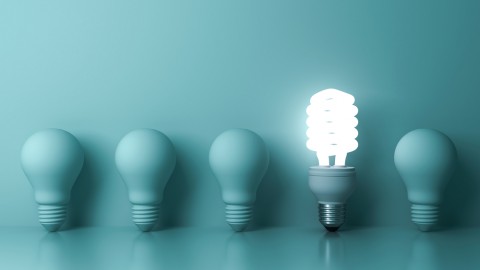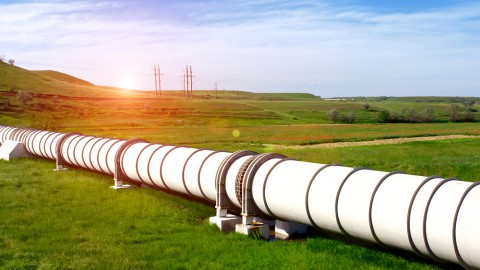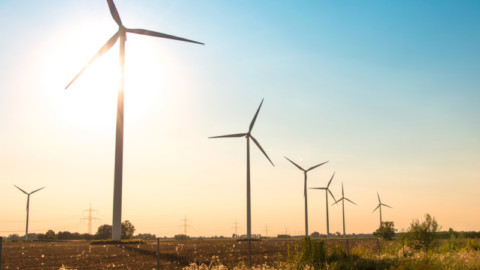The 2023-24 Federal Budget has included major investments in the energy sector, allocating funding to critical energy investments and infrastructure to stop energy price rises and invest in nation-building industries.
The Budget has a clear focus on taking action to ensure Australia is positioned to become a renewable energy superpower; as well as providing targeted relief to Australians struggling with energy price rises.
Energy Bill Relief
For consumers, this Budget is funding a plan to ensure households and communities can take advantage of the savings from smarter energy use. The Energy Bill Relief Fund package will be applied directly to bills as credits to eligible households, including those on income support or pensions, and to small businesses.
Households and businesses will be able to access energy upgrades to improve their energy use and save on their energy costs with the $1.6 billion Energy Savings Plan.
As part of Energy Savings Plan:
- $1.3 billion will be invested to establish the Household Energy Upgrades Fund
- $1 billion will be provided to the Clean Energy Finance Corporation (CEFC) to turbocharge financing options for household energy upgrades – partnering with banks and other lenders on upgrading homes with battery-ready solar PV, modern appliances and other improvements to keep them warmer in winter and cooler in summer –helping more than 110,000 households lower their energy bills
- $300 million will go to supporting upgrades to social housing, cofunded and co-designed with the states and territories
- It’s estimated that once implemented, around 60,000 social housing properties will save up to one-third of their energy consumption from upgrades per year
- $310 million in tax relief will be delivered via the Small Business Energy Incentive, to provide businesses with annual turnover of less than $50 million with an additional 20 per cent deduction on spending that supports electrification and more efficient use of energy
- The bonus tax deduction will be available for up to $100,000 of total eligible expenditure (with the bonus tax deduction being $20,000). Up to 3.8 million small and medium sized businesses will have access to the new tax incentive from 1 July 2023 to 30 June 2024, to help unlock energy savings
Hydrogen Headstart
As the world transitions towards net zero, renewable hydrogen is a critical enabler for future manufacturing of green metals and other products the world needs as the transformation to net zero by 2050 gathers pace.
The 2023-24 Federal Budget included the establishment of the Hydrogen Headstart initiative to support the biggest green hydrogen projects to be built in Australia.
In this Budget, the Federal Government is investing:
- $2 billion for Hydrogen Headstart, providing revenue support for large-scale renewable hydrogen projects through competitive hydrogen production contracts
- These will help bridge the commercial gap for early projects and put Australia on course for up to a gigawatt of electrolyser capacity by 2030 through two to three flagship projects.
- This investment will build critical domestic experience and expertise, and position Australia to take advantage of the immense jobs and investment potential of the technology
- $38.2 million for a Guarantee of Origin scheme, which will certify renewable energy and track and verify emissions from clean energy products – in particular hydrogen
- This is critical funding to ensure Australia is seen as an attractive investment destination, to accelerate investment in an Australian hydrogen industry and to support access to future markets for verified renewable and clean products
- Importantly, the Government will also provide $5.6 million for further work before the end of 2023 on the best ways to leverage Australia’s competitive strengths in renewable energy, critical minerals and highly skilled workforce to accelerate our other clean industrial and manufacturing capabilities
National Net Zero Authority
The Federal Government will also legislate a national Net Zero Authority to ensure the workers, industries and communities that have powered Australia for generations, can seize the opportunities of Australia’s net zero transformation.
The Authority will have responsibility for promoting the orderly and positive economic transformation associated with achieving net zero emissions.
The new, legislated Net Zero Authority will:
- Support workers in emissions-intensive sectors to access new employment, skills and support as the net zero transformation continues
- Coordinate programs and policies across government to support regions and communities to attract and take advantage of new clean energy industries and set those industries up for success
- Help investors and companies to engage with net zero transformation opportunities
The Capacity Investment Scheme
Following unanimous agreement with the states and territories, this Budget provides funding for the initial auctions of the Capacity Investment Scheme – with the Commonwealth underwriting investment which will bring on new supply of clean, dispatchable power across the country.
The Capacity Investment Scheme will unlock over $10 billion of investment in the grid.
The Government is also providing $46.5 million to the Australian Energy Regulator to regulate our energy markets and protect consumers through the transformation.
This Budget leverages $12 billion of the Government’s $20 billion investment in Rewiring the Nation to transformational transmission projects, including:
- $1 billion in Tasmania’s Battery of the Nation projects
- $1.5 billion towards Renewable Energy Zones and offshore wind in Victoria
- $4.7 billion to unlock critical transmission in New South Wales
Powering the Regions Fund
In recognition that the impacts of climate change are already being experienced by communities across the country, including more very hot days, more intense rainfall, and warmer averages, the Budget will fund the first ever National Climate Risk Assessment to help Australia adapt in a changing world.
To continue to support Australia’s regions in a decarbonising economy, the Government has allocated $1.9 billion to the Powering the Regions Fund package, including:
- $600 million to the Safeguard Transformation Stream to assist trade-exposed safeguard facilities
- $400 million to the Critical Inputs to Clean Energy Industries stream supporting primary steel, cement, lime, aluminium and alumina industries
- $400 million to the Industrial Transformation Stream to be administered by ARENA, supporting regional industrial facilities, including rail and aviation, and helping support new clean energy industries
The Federal Government’s Energy Future Plan will reduce pressure on power bills and cut emissions. It will support workers in existing industries and ensure we are attracting jobs and investment in new industries and critically, it will set Australia up as a renewable energy powerhouse for jobs, exports and growth.
Industry responds
ARENA CEO, Darren Miller, has welcomed the announcement of the Hydrogen Headstart initiative, and said the initiative will catalyse Australia’s hydrogen industry and other clean energy industries, and help position Australia as a global hydrogen leader.
Mr Miller said the Hydrogen Headstart initiative will ensure large scale hydrogen projects already in development can get off the ground in Australia.
“Australia has an unparalleled opportunity to become a global green hydrogen leader, but we can’t afford to lose our momentum as other competing countries step up their ambitions and support,” Mr Miller said.
“With this funding, we are looking to incentivise green hydrogen production in Australia by backing early projects that will be among the largest in the world.
“This funding will reduce the cost of green hydrogen produced via renewable electricity and will scale up our hydrogen sector. These projects will create thousands of regional jobs and will help reduce emissions in industry in line with our climate targets.”
According to new analysis by McKinsey and modelling by DCCEEW, Australia’s hydrogen industry could generate $50 billion in additional GDP, and create more than 13,000 regional jobs and a further 13,000 jobs from construction of new renewable energy infrastructure by 2050.
This program builds on ARENA’s existing work in hydrogen and track record of delivering transformative projects in the energy transition in pursuit of net zero.
ARENA also welcomes new funding to deliver the Industrial Transformation Stream of the Federal Government’s Powering the Regions Fund.
As part of the $1.9 billion Powering the Regions Fund package, the Federal Government announced the $400 million Industrial Transformation Stream to support industrial facilities across Australia to reduce their emissions in line with Australia’s 2030 targets and support the transition to net zero by 2050.
This program will build on ARENA’s previous work and existing funding programs to support innovation to drive industry to reduce their emissions, including the Industrial Energy Transformation Studies Program which is currently open to support feasibility and engineering studies.
“While the journey to transition our electricity system to renewable energy is well underway, the pathway to net zero is just beginning in many other hard to abate sectors. There is much to do, and no time to waste,” Mr Miller said.
“The $400 million Industrial Transformation Stream will directly support industrial facilities in regional communities throughout Australia to reduce emissions and reduce energy costs by switching away from fossil fuels.
“In doing so, this funding will support new jobs and upskilling, and commercialisation of a wide range of energy efficiency, electrification, renewable energy, storage and flexible demand technologies needed to achieve our climate targets and set our industries up for success in a net zero world.”
Clean Energy Council Chief Executive, Kane Thornton, said this budget demonstrates that the Federal Government recognises the crucial role of clean energy in Australia’s economic future and how clean energy and electrification drive down power prices and manage inflation.
“This budget has the building blocks to keep Australia in the clean energy investment race and balances cost of living relief for small businesses and households through clean energy and energy efficiency,” Mr Thornton said.
“These are concrete steps in building the foundation to accelerate the clean energy transition.
“There’ll be more to do in the coming months and years to deliver Australia’s clean energy transition and realise our nation’s clean energy superpower ambitions.
“The Clean Energy Council will continue to work collaboratively with the Australian Government to help make this a reality.”
The Australian Hydrogen Council (AHC) welcomes the budget announcement of $2 billion for a new Hydrogen Headstart program, $38.2 million for a Guarantee of Origin scheme and $2.0 million to establish a fund to support First Nations people and businesses to engage with hydrogen projects
AHC CEO, Dr Fiona Simon, said this is a strong signal from the Federal Government that it is committed to the hydrogen industry’s development, particularly in light of fierce global market competition for investment dollars.
“The budget is exactly the signal the market needed to remember, and then act on, the fact that Australia has the potential to be a world leading hydrogen producer.
“The AHC commends the Albanese Government for this demonstration of confidence in the vital role that renewable hydrogen has to play in the energy transition, and in Australia’s vital role to be a hydrogen producer for our region.
“Competitive hydrogen production contracts are a much-needed market mechanism to provide revenue support for flagship projects, and will help get more and more large hydrogen projects off the ground so we can scale up to gigawatt scale capacity as soon as possible.
“As Australia’s peak body for the emerging clean and renewable hydrogen industry, we are looking forward to working with the government and our members to bring this important policy to life.”
Energy Efficiency Council CEO, Luke Menzel, called the 2023/24 budget a “one-two punch to high energy bills” as the budget covers multiple issues across the energy sector.
“Fixing the energy performance of social housing is one of the best things we can do to shield the most vulnerable in our community from needlessly high energy bills,” Mr Menzel said.
“And the Government has tasked the Clean Energy Finance Corporation (CEFC) with its next great challenge: putting comfortable, healthy homes that are affordable to run within reach for average Australian families.
“The CEFC has been partnering with banks to provide low cost finance for energy performance improvements for a while, but these programs have been relatively small.”
Mr Menzel said the $1 billion dollar investment supercharges the work with the CEFC, and not a moment too soon.
“As the Treasurer said, this is a common‑sense program that will help family budgets and reduce emissions,” Mr Menzel said.
“To reach net zero by 2050, millions of Australian homes need upgrades to boost energy efficiency and electrify appliances. This is a huge undertaking, and this year’s budget commitment is a great start.”
The Government has also committed to helping householders understand the energy performance of their home through funding an expansion of the Nationwide House Energy Rating System, as well as expanding the Greenhouse and Energy Minimum Standards program.
“We know minimum standards and energy ratings work. Yes, we need more energy performance labels on more appliances. But more than anything, we need an energy label on the biggest purchase of all: the family home.” Mr Menzel said.
The EEC also commended the Federal Government on its commitment to decarbonising and improving the energy performance of businesses small and large.
The Government has also committed $1.25 billion to decarbonising Australian industry through the Powering the Regions Fund, complementing the reforms to Safeguard Mechanism with support for industry to transition.
Mr Menzel said this Budget fires the starters gun on the race to achieve net zero by 2050.
“Energy efficiency helps address some of the biggest challenges we face as a nation: Achieving our emissions reduction targets while lowering our energy bills,” Mr Menzel said.
“It’s great to see the government recognise that, and back-in businesses that want to make smart investments to cut their energy use and drive up productivity.”
Mr Menzel congratulated the Government on its engagement with stakeholders to deliver strong outcomes through its forthcoming National Energy Performance Strategy.
“The EEC has worked closely with the Government to highlight the benefits of improved energy performance. Tonight’s measures, which reflect a number of recommendations put forward by the EEC and our partners, build momentum for a step change in Australia’s energy performance,” Mr Menzel said.
“This time in 2022, Australia was ranked last in the developed world for policy and practice in energy performance. This Budget demonstrated we have a government committed to ensuring that never happens again.”
Rewiring Australia co-founder and chief scientist, Dr Saul Griffith, said this budget is a profound reset of climate and energy policy after a lost decade under the previous government.
“This is Australia’s first electrification budget. It positions us to become a world leader in the efficient electric energy system of the future. It demonstrates federal ministers have worked hard to start the massive shift towards a new energy paradigm across the economy,” Dr Griffith said.
“The electrification budget builds on Australia’s love affair with rooftop solar. It will help households to realise cost savings from substituting expensive gas machines for clean, electric alternatives. Tonight’s investment allows us to use abundant Aussie wind and sunshine to power more of our driving, cooking and heating, simultaneously slashing energy bills and carbon emissions.
“We are excited to work with the government over the coming year to optimise the energy system to this commitment to electrification and make these investments go further, and further cut energy costs. We are excited that the government is making a substantial downpayment on an answer to the US Inflation Reduction Act.”
Smart Energy Council Chief Executive, John Grimes, said we are seeing the first steps on the path to Australia becoming a renewable energy superpower, following the Federal Government funding the establishment of a renewable hydrogen industry in this country.
“This is a Government that must also address a massive cost-of-living challenge and is showing a real commitment to bringing all Australians on this energy transition journey, unlocking $1.6 billion for home electrification and slashing power bills for those that need it most,” Mr Grimes said.
“The Smart Energy Council is pleased to see that the Clean Energy Finance Corporation will oversee a $1 billion fund, assisting customers to invest in energy efficient appliances in partnership with financial institutions.
“Combining home electrification with a $300 million energy efficiency in social housing upgrade, to be matched by states and territories, shows the wisdom that empowering homes to electrify is both anti-inflationary and delivers decarbonisation.”
Mr Grimes said the Smart Energy Council sees these significant pledges as critical for the climate and the economy. The Smart Energy Council stands ready to play a key advisory role in delivering the potential of this Budget.
“The urgency for Australia to do more remains, as the rest of the world, including our allies, moves quickly to decarbonise,” Mr Grimes said.
“This is an Australian Government willing to step up onto the world stage and put its hand up to host a UN Climate Conference in 2026. Now it has the opportunity to fast-track its own transition from fossil fuel exporter to renewable energy superpower.
“A $2 billion fund to establish an Australian Renewable Hydrogen industry is a game-changing investment and will place our nation ahead on the frontier of this energy advancement.
“Reverse auction tendering with a gigawatt scale hydrogen capacity to be delivered by the end of this decade – with funding for First Nations people to engage with Australia’s renewable hydrogen industry – that is a great shift forward.”
Energy Consumers Australia has welcomed measures in the Federal Budget to ease short term cost-of-living pressures, while investing to address the long-term energy affordability challenges.
Energy Consumers Australia CEO, Lynne Gallagher, said the package would help to protect households and small businesses from excessive bill shock while larger reforms to drive down prices are delivered.
“Over the next two years, up to $500 in direct assistance will provide welcome relief for millions of Australian households and $650 for small businesses that have come under increasing financial pressure,” Ms Gallagher said.
“It will see more than 5.5 million households eligible for some assistance with their electricity bills, in addition to around a million small businesses.
“As well as this direct assistance, we welcome the investments to support consumers to control their energy use which will help drive down bills.
“These include new investment in the Clean Energy Finance Corporation, social housing and small business energy incentives to support electrification and more efficient use of energy.
Ms Gallagher said this package of measures would help offset rising energy prices of between 25-30 per cent expected this financial year.
“The recent price increases come on top of double-digit increases the previous year and will certainly be felt by consumers who we know are already struggling with multiple cost-of-living and cost-of-business pressures,” Ms Gallagher said.
“The Federal Budget combines much needed immediate direct assistance with investments that help consumers get control of their energy costs.
“This budget tackles prices while recognising the importance of supporting consumers with their energy use and that is the combination we were looking for.”
Ms Gallagher welcomed initiatives to give people better information about their home’s energy rating.
“Helping people reduce their bills starts at home because the average energy rating is just 1.7 stars. Expanding the house energy rating scheme to existing homes will make people more informed and help incentivise energy efficiency upgrades for owners,” Ms Gallagher said.
Ms Gallagher also welcomed the adjustments to the petroleum resource rent taxation of the gas industry, “which are modest and long overdue.”
“Consumers want to see governments act on delivering a clean energy future with those benefits flowing through to consumers,” Ms Gallagher said.
“Australia’s successful energy transition will only take place if consumers are appropriately supported to be a part of the process.”

















Savings , you have to be joking. Sending Australia broke and underpowered. . wind sun batteries will never be enough to produce real power. Base power , coal and gas and Nuclear is what we require for cheaper power. Someone has a strategy to get very rich pushing the clean energy market and making us poorer. it about time someone spoke up and people were told the truth why power is so expensive. Don’t blame wars in other courtiers. blame our weak politicians for listening to Green millionaires. Australia is blessed with all natural energy resourses required and they are trying to shut them all down!